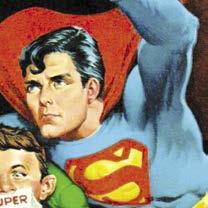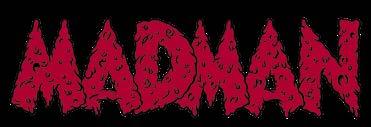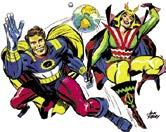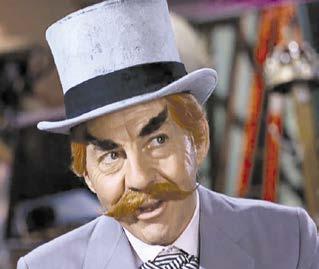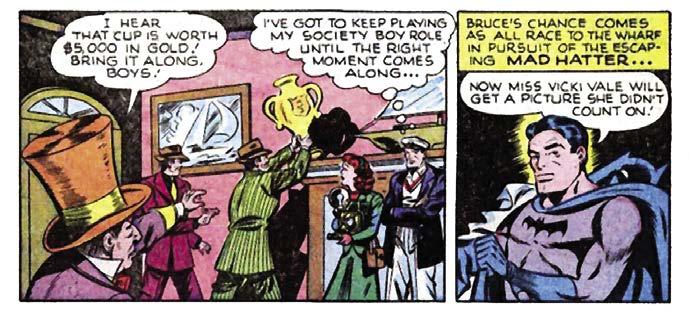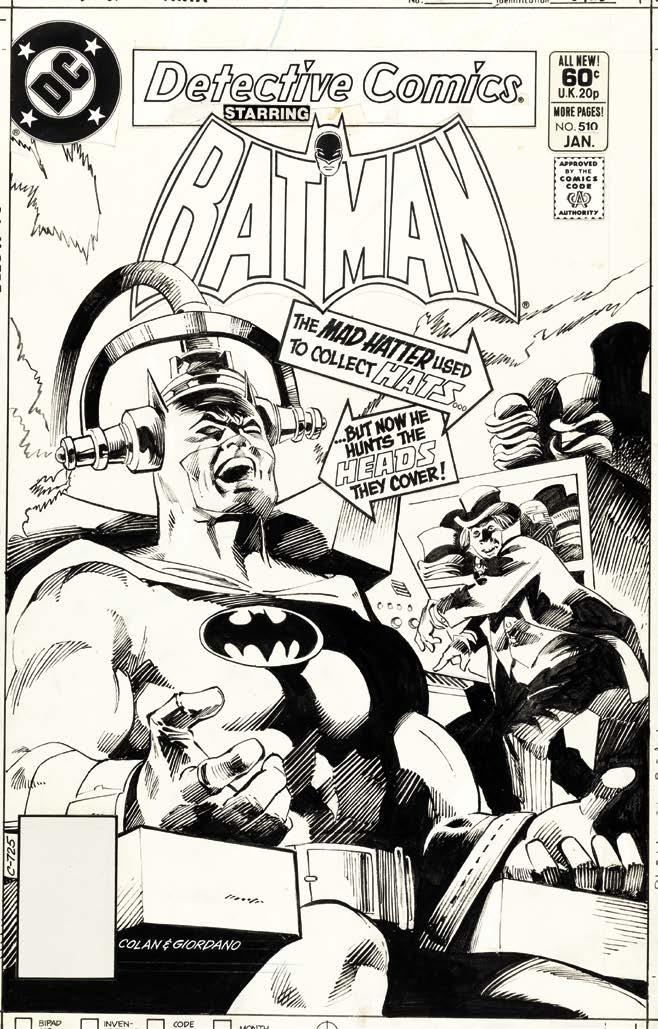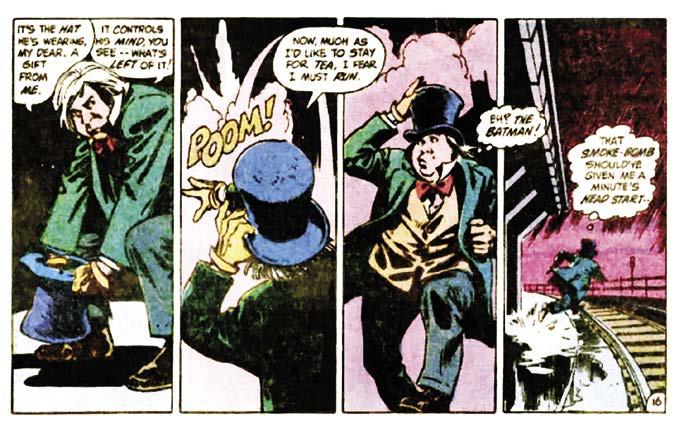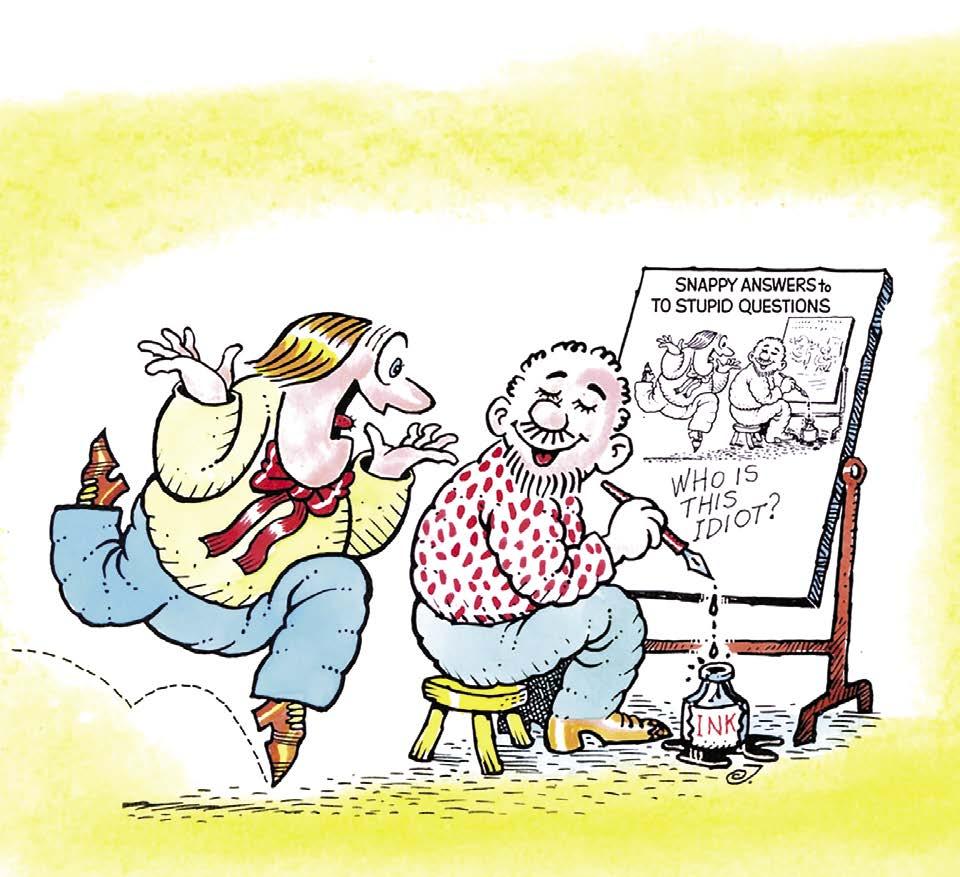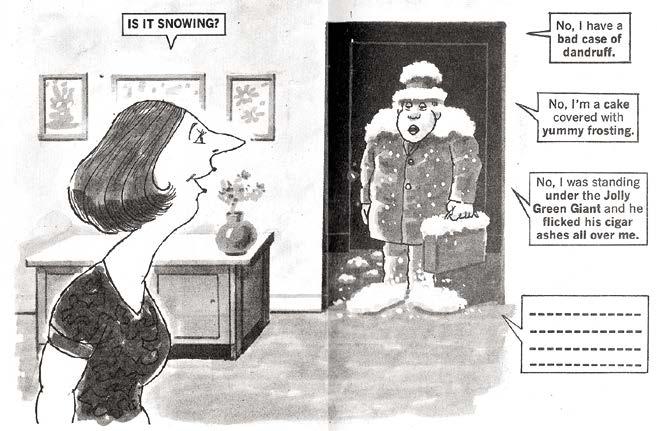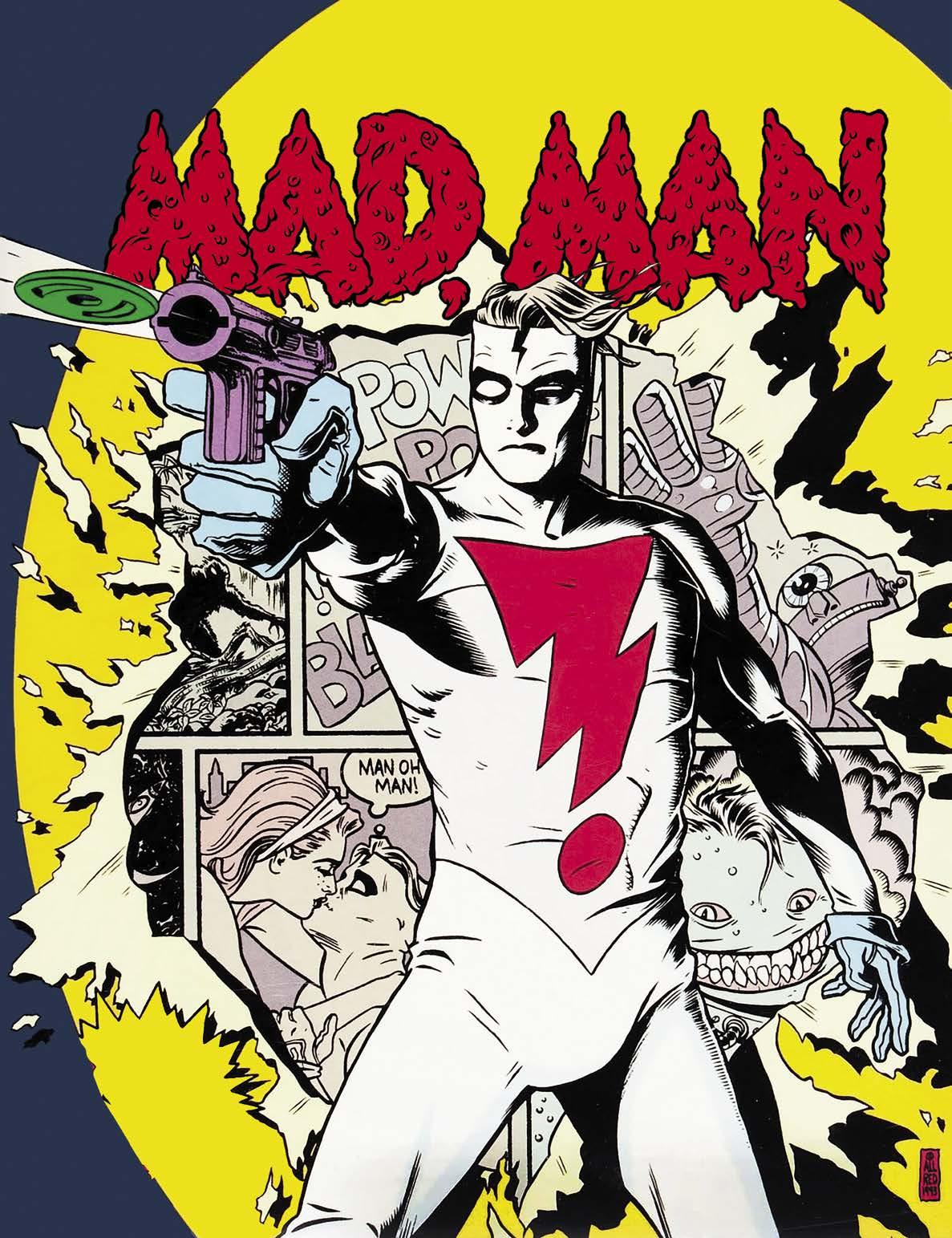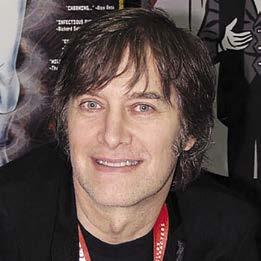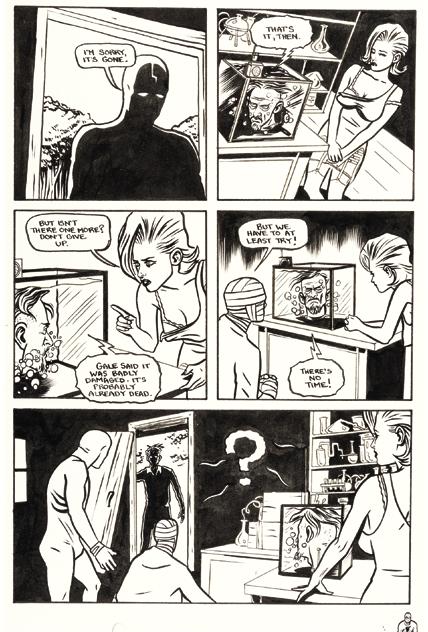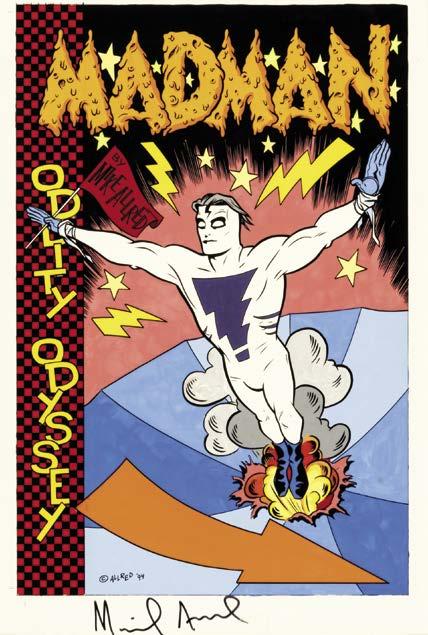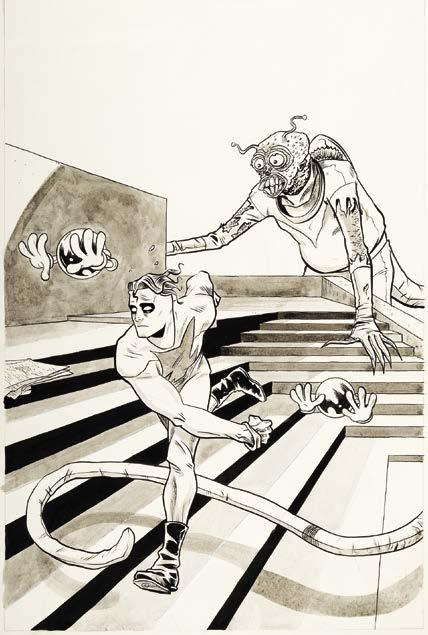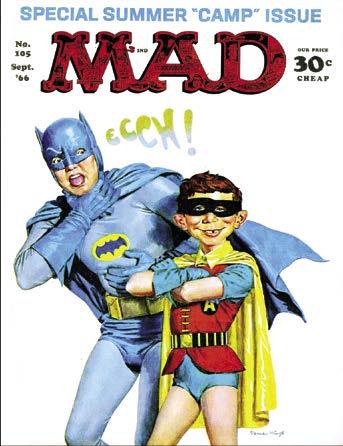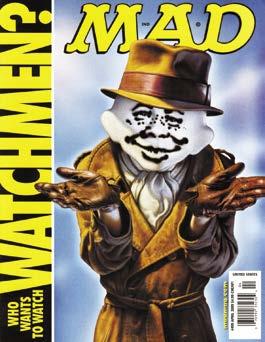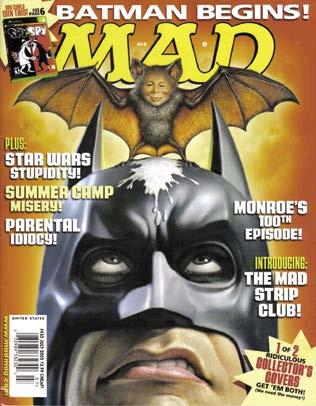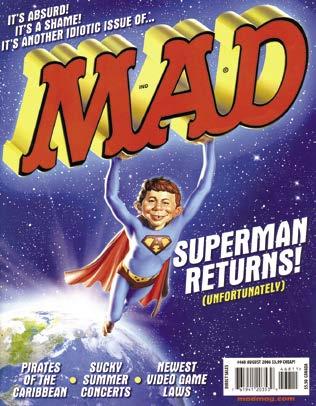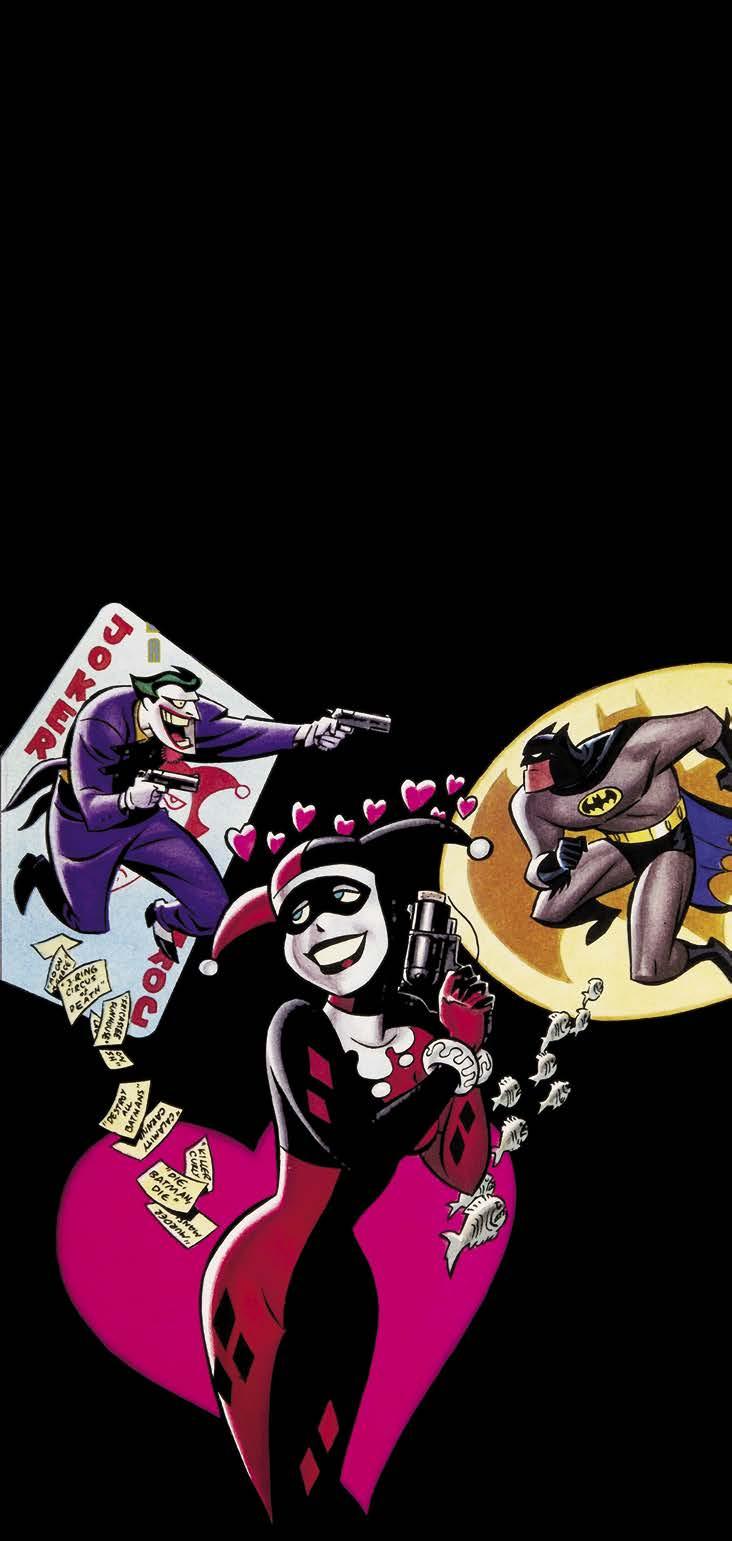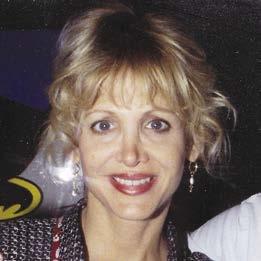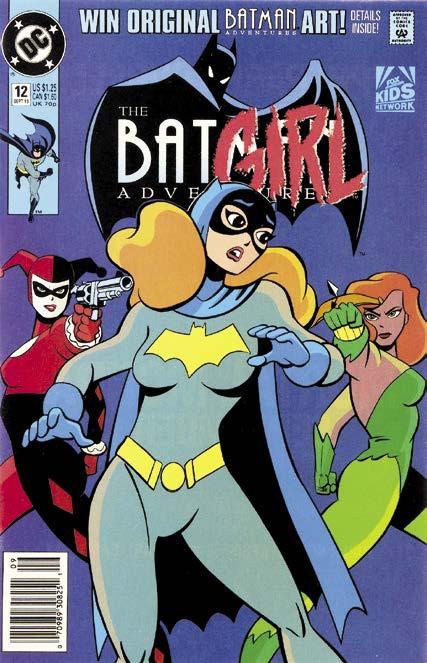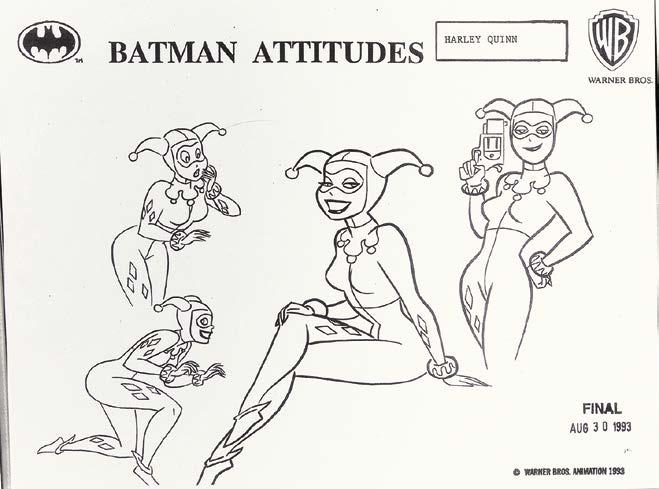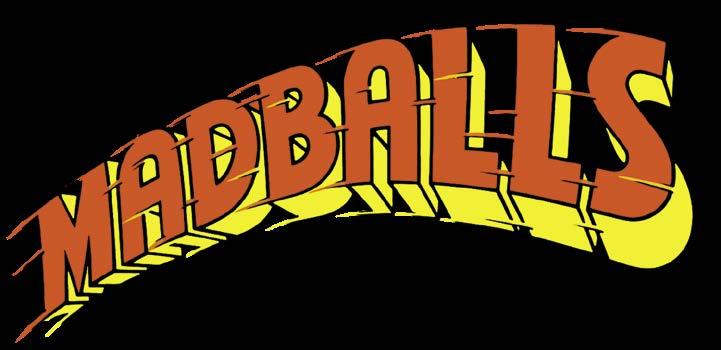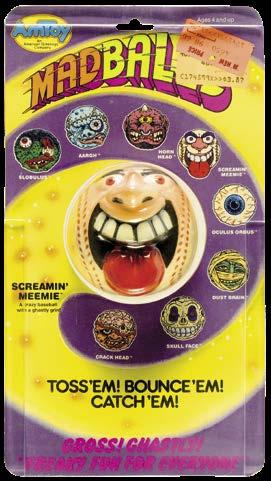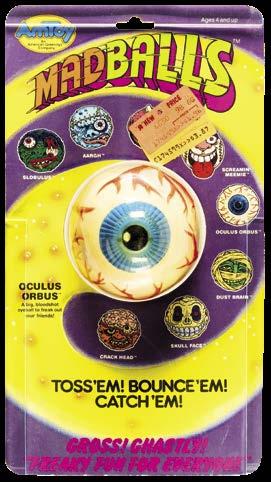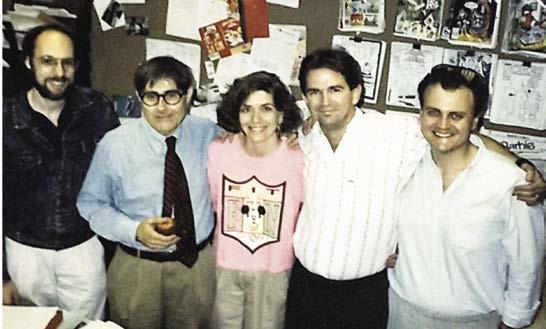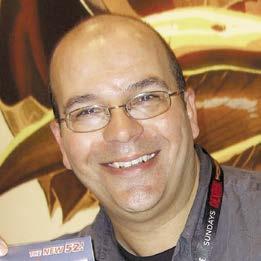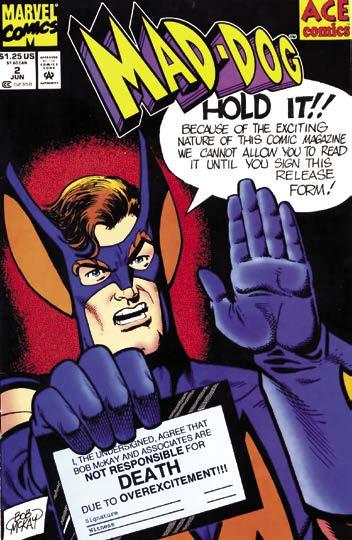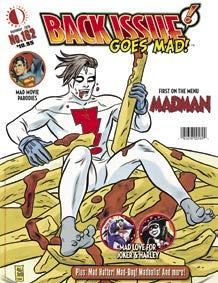EDITOR-IN-CHIEF
Kevin
Laura
BACK ISSUE™ issue 162, October 2025 (ISSN 1932-6904) is published monthly (except Jan., March, May, and Nov.) by TwoMorrows Publishing, 10407 Bedfordtown Drive, Raleigh, NC 27614, USA. Phone: (919) 449-0344. Periodicals postage paid at Raleigh, NC. POSTMASTER: Send address changes to Back Issue, c/o TwoMorrows, 10407 Bedfordtown Drive, Raleigh, NC 27614.
Michael Eury, Editor Emeritus. Roger Ash, Editor-In-Chief. John Morrow, Publisher. Editorial Office: BACK ISSUE , c/o Roger Ash, Editor, 2715 Birchwood Pass, Apt. 7, Cross Plains, WI 53528. Email: rogerash@hotmail.com. Eight-issue subscriptions: $102 Economy US, $127.60 International, $39 Digital. Please send subscription orders and funds to TwoMorrows, NOT to the editorial office. Cover artwork by Michael Allred. TM & © Michael Allred. All Rights Reserved. All editorial matter © 2025 TwoMorrows and Roger Ash, except Prince Street News © Karl Heitmueller Jr. Printed in China. FIRST PRINTING
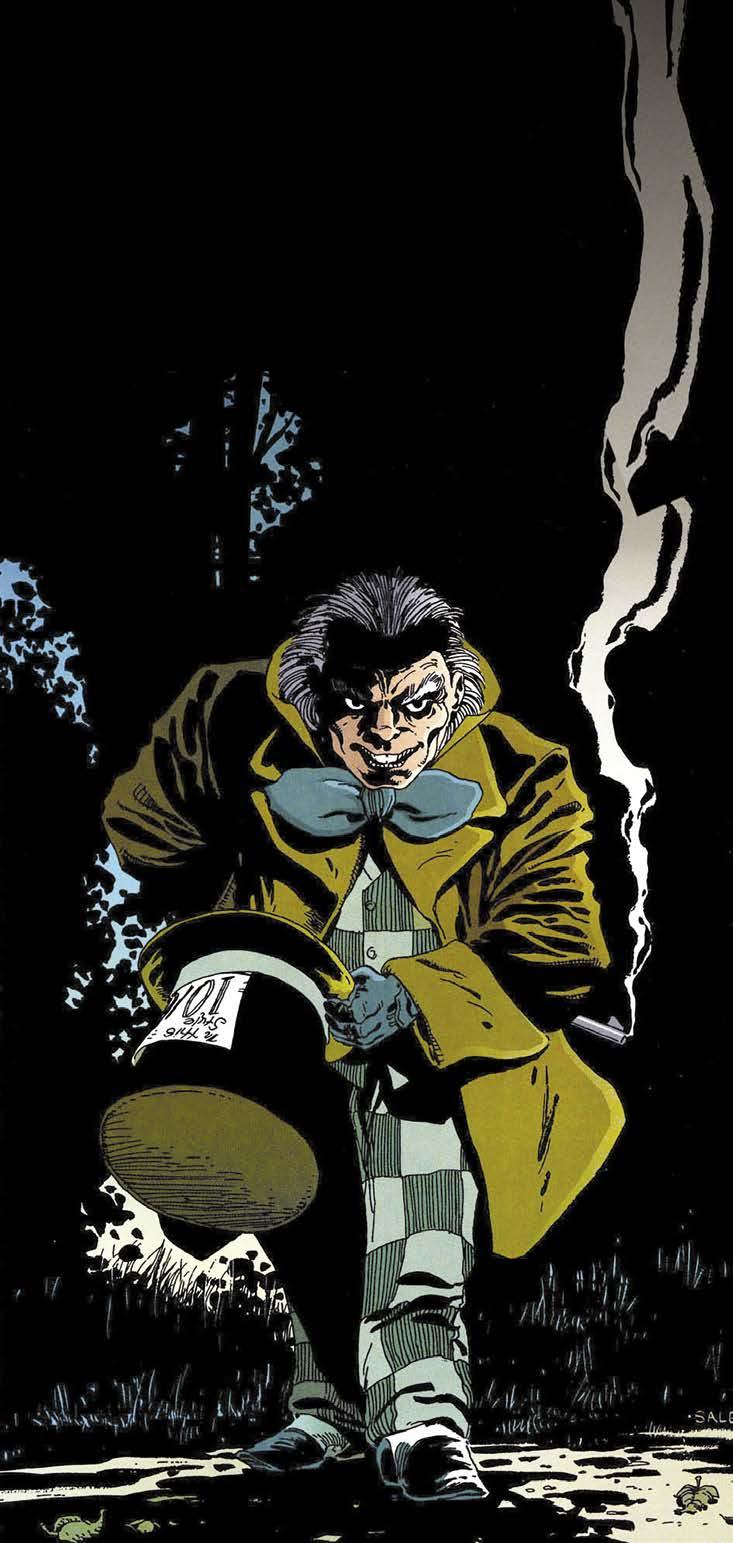
Due to the fact that I first saw him on reruns of the late ’60s Batman TV show, I just figured that the Mad Hatter was a major Bat-villain, on par with the Joker, Catwoman, and the Penguin. Turns out that was not the case. The Chapeaued Charlatan had only appeared thrice in comics at all before gracing the small screen. Add to that the fact that the televised version was not even the “real” Hatter! Don’t get confused, we’ll sort it all out. But beware, we are dealing with a character who has ‘Mad’ right in his name.
TOP OF THE MORNING
The character’s name of course comes from Lewis Carroll and his famous Alice books. This fact is made perfectly clear in his first appearance in Batman #49 (Oct-Nov. ’48). In a story the Grand Comics Database ascribes to writer Bill Finger, pencilers Bob Kane and Lew Sayre Schwartz and inker Charles Paris, his depiction is obviously based on the iconic John Tenniel illustrations from the original books, showing the Hatter as a diminutive figure, clean shaven, with dark hair and wearing a huge top hat and suit.
The character would sit dormant until Detective Comics #230 (Apr. ’56) where writer Bill Finger and artists Sheldon Moldoff and Charles Paris would present him with a totally different appearance, this time sporting a red-haired, moustachioed look and standing about six feet tall. Now given a name, Jervis Tetch, one has to wonder if DC did this to have a copyrightable visual to go with the name. This is the version that David Wayne would portray in the TV show, and the plot of the issue would be adapted for the second pair of episodes the Hatter infiltrated, as he tries to add Batman’s cowl to his prodigious hat collection. DC’s Batman ’ 66 series showcased this Hatter in the fourth issue (Dec. 2013) in a narrative by Jeff Parker and Jonathan Case. The depiction was popular enough to appear in a comic given away with Pop-Tarts in 1966, except now the villain sported white hair! It makes you wonder if besides sporting different headgear, he also wasn’t changing toupees!
by Brian Martin
The Mad Hatter evolved from mischievous criminal to menacing villain in Batman: Legends of the Dark Knight Special #2 by Tim Sale. (inset) David Wayne as the Hatter in TV’s campy Batman series.
TM & © 2025 DC Comics.
(top left) The Mad Hatter debuts in Batman #49. (top right) It’s only his second appearance, and the Mad Hatter makes the cover of Detective Comics #230. (bottom) Just when you think the Mad Hatter is cooked, he pulls a delectable new chapeau out of his repertoire. From Batman #161.
TM & © 2025 DC Comics.
Batman #161 (Feb. ’64) featured a return engagement, then in issue #201 (May ’68), the Hatter was one of a coterie of villains who actually aid Batman. Don’t get too excited, it was for totally selfish reasons.
A sort of hybrid appeared in the, “Where Were You on the Night Batman was Killed?” serial that David V Reed, John Calnan, and Tex Blaisdell crafted in Batman #291294 (Sept-Dec ’77). The character only appeared in crowd scenes, but while sporting crimson hair and ‘stache, he was again vertically challenged.
WHITE STETSON
Writer Reed teamed with artists Rich Buckler and Vince Colleta to present the Hatter as the featured foe for the first time in the Bronze Age in Batman #297 (March ’78). Still a redhead, Tetch grows bored with criminal life and decides to become a hero. It does not work out well however, as after saving a woman from a mugging he robs her himself. With the Hatter constantly committing crimes after doing good deeds, the story delves into the villain’s obsession with headgear and its possible side effects.
PUT ON YOUR THINKING CAP
Still sporting orange tresses, The Mad Hatter otherwise reverted to his original look when he returned in Detective Comics #510 (Jan. ’82) and discloses that he is in fact the original Hatter from that initial appearance. In a sanitarium
ever since, the other Hatter took his place, but this version reveals he has ‘disposed’ of the imposter. Writer Gerry Conway, along with artists Gene Colan and Klaus Janson, depicts a villain more concerned with stealing the information in a head rather than a hat that adorned it.
UNDER THE COWL
By this point, the Angry Antagonist had ascended to the height of at least a B-level villain, following up his appearance in the grouping of Bat-foes who infested Detective #526 (May ’83), he returned for a major altercation during Doug Moench’s first Batcave residence beginning with Batman #378 (Dec. ’84), even though there seemed to be no consensus regarding his hair color. It is red one issue, white in another. He did remain whiskerless.
In this issue, and the one to follow, the Hatter is once again using his hats to pull information from people’s brains, while simultaneously attaining control of people.
A novel concept is the introduction of a chimpanzee sidekick for the villain. While delaying Robin in the first issue, the creature mainly serves as someone for Tetch to talk to, while also sporting a checkered vest.
Moench would use the character again, reprising the plot of a plethora of miscreants plaguing our hero in the multi-artist Batman #400 (Oct. ’86). Of interest is the fact that in Detective #566 (Sept. ’86), which is a prelude to this tale, Batman’s files list Tetch at 5’8” with red hair.
STRAW MEN
To perhaps further muddy the waters, not long after, in Detective #573 (April ’87), Mike W Barr, Alan Davis, and Paul Neary were responsible for a narrative that features the version of Jervis Tetch that sports the prominent facial hair above his upper lip and is clearly a different person.
Plotwise, the Hatter once more abandons his predilection for stealing headwear and instead commits crimes based on phrases that involve hats, including a ‘hat trick’ in hockey and a politician ‘throwing his hat into the ring.’ He is, of course, once again….handed his hat by Batman.
In their revisionist Black Orchid series in 1989, Neil Gaiman and Dave McKean presented a
(top left) The original art for Gene Colan and Dick Giordano’s electrifying cover to Batman #510. Original art scan courtesy of Heritage Auctions (www.ha.com). The Hatter seeks some serious information in Detective Comics #526. (inset) You can’t keep a Mad Hatter down.
Snappy Answers... ...to Stupid Questions
I didn’t go to that many movies when I was a kid. But I could hold a conversation with you about The Godfather or The Poseidon Adventure , not because I had seen the movies, but because I had read the parodies in MAD magazine. Playboy provided an education in its own way, but I learned more about politics and advertising and movies and even sarcasm thanks to MAD . And one of the chief contributors to MAD for 65 years was Al Jaffee.
Readers of MAD will recall Jaffee for his brainchild, the Fold-In, a satire of the Playboy centerfold and Life magazine fold-outs. Fold-Ins graced the inside back cover of hundreds of issues of MAD. What you may not know is that Jaffee was born
by Dewey Cassell
Al Jaffee’s original cover art to More MAD Snappy Answers to Stupid Questions. Original art scan courtesy of Heritage Auctions (www.ha.com).
in Savannah, Georgia, in 1921 and moved to a Lithuanian shtetl with his mother when he was 6 years old. And before Jaffee went to work for Bill Gaines at Entertaining Comics, he used to work for Stan Lee at Timely Comics, the precursor to Marvel. After getting out of the Army, Jaffee did humor and romance comics for Timely, including Patsy Walker. He also worked for the original MAD-man, Harvey Kurtzman, on Humbug, Trump, and Little Annie Fanny. And he created a vertical panel comic strip called Tall Tales, which was syndicated by the New York Herald Tribune, appearing in over 100 newspapers.
But he is best remembered for his work on MAD. However, the Fold-In wasn’t the only recurring feature Jaffee created for
al jaffe
Photo courtesy of Roger Ash.
(top left) A typical “Snappy Answers” cartoon and the level of snark involved. Original art scan courtesy of Heritage Auctions (www.ha.com). (top right) The cover to one of Jaffe’s many “Snappy Answers” books. (bottom left) A full color “Snappy Answers” from the back cover of MAD #264. Original art scan courtesy of Heritage Auctions (www.ha.com). TM & © 2025 Warner Brothers.
MAD. He also produced “Snappy Answers to Stupid Questions,” which were exactly what they sound like. “Snappy Answers” depicted obvious and easily understood situations about which someone asks an ignorant question, to which three sarcastic replies are provided. For example, a man walks through the front door of his home, covered from head to toe in flakes of white like Frosty himself and his wife asks, “Is it snowing?” to which the man replies, “No, I have a bad case of dandruff.”
The early “Snappy Answers” were single panel gags, but the concept quickly evolved to include “Snappy Answers” short stories, which were two or more panels (or pages) in length, such as “Snappy Answers Through History.” Jaffee also introduced “Stinging Comebacks to Snappy Answers,” in which the person who asked the stupid question gets the last word.
Truth be told, “Snappy Answers” represented something that most of us would love to have said at one time or another in response to a ridiculous question. Being relatable is part of what made the feature so enjoyable. As if to acknowledge that, each “Snappy Answers” included one blank response for the reader to fill in themselves.
Regarding the inspiration for his “Snappy Answers,” Jaffee is quoted in issue #9 of The Journal of Madness (2009) as saying, “For a time after my divorce and feeling depressed about the whole matter, it is an upheaval, so a friend recommended that I see a therapist to just talk things out. So I went for a period of time and I found it beneficial. I found it was beneficial to
michael allred
© Luigi Novi / Wikimedia Commons.
by Christopher Irving
(previous page) Madman came back with a BANG when Madman Comics moved to Dark Horse. (inset) The ashcan included with Hero Illustrated (left) Frank Einstein on the cover of Creatures of the ID. (right) Frank’s next appearances in Grafik Muzik #1. All art by Mike Allred.
In some ways, the ’90s was the beginning of the end for the classic comic book. Newsstand distribution started to go away, cutting off an entry point for potential new readers; as a result, storylines in superhero comics became more and more intertwined and geared to long-time readers. The twin successes of both Watchmen and The Dark Knight Returns ushered in waves of “grimdark” comics where superheroes went from smiling to constantly gritting their teeth in anger. The Image Comics creators ushered in legions of imitators who got the flash of cross-hatching without the substance of great illustration.
But it was also an exciting time: For every Image comic, it seemed Dark Horse had a higher quality answer with creators like Frank Miller (Sin City ), Mike Mignola ( Hellboy ), Paul Chadwick ( Concrete ), and Geof Darrow ( The Big Guy and Rusty the Boy Robot); Peter Bagge was bringing Hate! to Fantagraphics readers while Dan Clowes continued to experiment with narrative and form in Eightball; DC Comics experimented with adult genres, particularly horror, with books like Neil Gaiman’s Sandman and Grant Morrison’s Doom Patrol ; and then, from a series of small publishers, emerged Mike Allred’s Madman , a send-off and
loving ode to the more playful, and earlier, eras of comics with a modern philosophical twist.
Madman Adventures got to me in 1992 when I was 15, subsisting off an odd diet of Batman , Superman, the Image comics crowd, and my wellworn copy of Jules Feiffer’s The Great Comic Book Heroes. I’d seen him pop up in ads in Comics Buyer’s Guide, with a retro ink line and distinctive costume (I always had a soft spot for the open-topped cowl ala Kid Flash, but Madman’s was a cross between that and the Scarecrow from Wizard of Oz ), but it wasn’t until Kitchen Sink Press put out a mini-comic of Madman Adventures #3 with Hero Illustrated magazine that I took notice.
There was no explanation or summary on the inside cover. Flipping it open past the foil stamped cover of the hero punching at an eyeball went straight to a splash page of Madman in the passenger seat of a truck, his head out the window on his way to a camping trip. This sabbatical eventually turns into an existentialist-fueled nightmare about godhood and loneliness, all with popping colors (I’ve always thought of Laura’s coloring as on par with a View Master reel). I didn’t get to experience Madman beyond that until a road trip to a comic book shop an hour away, and I walked away with the full three issues of the Tundra/ Kitchen Sink run of Madman Adventures
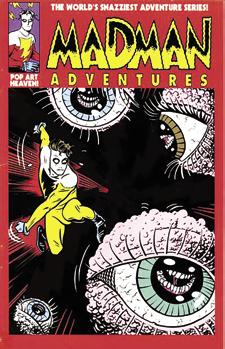
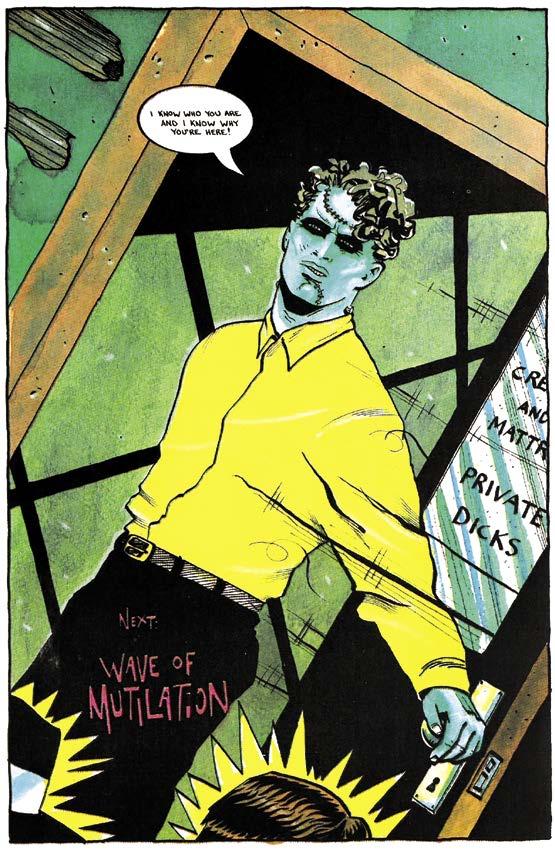
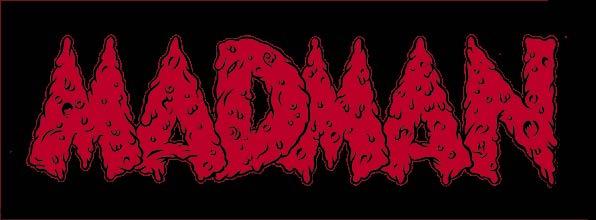
(top left) Severed heads and spooky ghouls in Mike Allred’s original art to Tundra’s Madman #2. (top right) Allred’s original art for an unused Wizard magazine cover. (bottom left) Original color art created on acetate for Kitchen Sink’s Madman: The Oddity Odyssey trade paperback. (bottom right) This original art was created for the inside front cover of Dark Horse’s Madman Comics #2. (opposite page, top left) Mike Allred’s original art for Madman Comics: Yearbook ’95 trade paperback from Dark Horse Comics. (opposite page, top right) The Atomics #14 original art for Allred’s own AAA Pop Comics. (opposite page, bottom) Madman: Two Trilogies original art for Graphitti Designs. Original art scans courtesy of Heritage Auctions (www.ha.com).
BONUS ART GALLERY
by Don Vaughan
The origins of MAD are common knowledge: Harvey Kurtzman, who was writing and editing Two-Fisted Tales and Frontline Combat for EC Comics, wanted to boost his salary, so publisher William Gaines encouraged him to create an easy-toproduce humor comic that would put a few extra bucks in Kurtzman’s pocket with minimal effort. The resulting comic book, subtitled Humor in a Jugular Vein, ran for 23 issues before being transformed into a black-and-white magazine, and the rest, as they say, is history.
MAD hit the stands in August 1952 with a specific mission: to parody the various genres, characters, and tropes of contemporary comic books and comic strips. The first issue, cover dated Oct.-Nov., parodied horror comics with “Hoohah!”, illustrated by Jack Davis; science fiction with “Blobs!”, illustrated by Wally Wood; crime with “Ganefs!”, illustrated by Will Elder (ganefs being a Yiddish word for thief or crook); and Westerns with “Varmint!”, illustrated by John Severin. The next couple of issues followed a similar format.
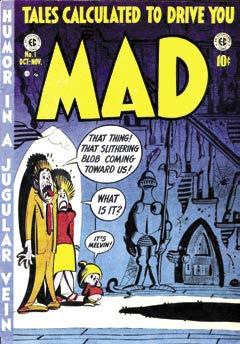
Sales were flat for the first few issues, suggesting that Kurtzman’s style of humor just wasn’t connecting with readers. Then came #4 and Kurtzman’s ground-breaking parody of Superman. Titled “Superduperman!” and illustrated by Wally Wood, the story makes perfect fun of every silly Superman trope, from Lois Lane’s cruel derision of Clark Kent to Superman’s need for a phone booth for a quick change to the actual motivations of costumed superheroes. The villain of the story is Captain Marbles, a parody of Fawcett’s Captain Marvel, who has forgone doing good deeds for a more lucrative life of crime. Superduperman does battle with Captain Marbles, but the two meta humans are too evenly matched. Superduperman finally vanquishes his foe by tricking him into punching himself in the face. “Captain Marbles has been destroyed by the only force as strong as he…HE!” Superduperman exclaims.
Superman’s publisher threatened a lawsuit over the parody, which Gaines ignored. DC may have disliked the story, but readers loved it. Sales for #4 jumped noticeably, and MAD soon found itself in the black.
IN THE BEGINNING...
“Superduperman!” was MAD’s first superhero parody, but certainly not its last. Over the course of the comic book’s 23 issues, Kurtzman took on Blackhawk (“Black and Blue Hawks!”, #5, illustrated by Wally Wood), Batman (“Bat Boy and Rubin!”,
It’s bats, man! Richard Williams’ original cover art “Batman E. Neuman” for MAD #289.
(inset) The MAD era begins.
TM & © 2025 EC Publications, Inc.
#8, also by Wood), Wonder Woman (“Woman Wonder!,” #10, illustrated by Bill Elder), and Plastic Man (“Plastic Sam!”, #14, illustrated by Russ Heath).
Movies and television shows became a MAD staple following its transition to a magazine format with #24 (July 1955), and those featuring superheroes were an especially rich target. In addition to superhero-related film and television parodies, MAD made fun of the genre in a variety of other ways, ranging from “Don Martin’s Guide to Some Very Obscure Comics Sound Effects” (the Human Torch hugging his girlfriend, Aquaman walking around in a squishy wetsuit) to “What If Superman Were Raised by Jewish Parents?” (You don’t want to know about his circumcision.) For this article, we’ll be focusing only on motion picture and television parodies.
When Richard Donner’s Superman debuted in 1978, we believed that a man could fly. Christopher Reeve WAS Superman in the eyes of the character’s most ardent fans, and the film spawned three sequels, each an exercise in diminishing returns. MAD parodied the first three films in the franchise,
all illustrated by Mort Drucker, starting in #208 with “Superduperman,” written by Larry Siegel. The veteran humorist slyly mocks many of the film’s sillier moments, including the ludicrous idea of Superman flying opposite the Earth’s rotation to reverse time and save Lois Lane. “Superduperman II,” scripted by Frank Jacobs, followed in #226, and “Stuporman ZZZ” ( Superman III ), written by Stan Hart, in #243. Across the trilogy, Drucker magnificently captures the movies’ carnage and more risible moments (always with a loving touch), while proving again and again why he is considered one of the greatest caricaturists of the 20th century. His work is simply superb.
MAD parodied two more Superman films in the years that followed: Superman Returns (“Stuporman Returns!” #468) and Man of Steel (“Man of Veal,” #524). Longtime MAD scribe Dick DeBartolo wrote the former, while Desmond Devlin penned the latter. Tom Richmond illustrated both parodies, taking some of the pressure off the aging Mort Drucker. Richmond, who joined MAD following a brief stint at Cracked, is competent,
(opposite page) Superhero parodies begin with Wood’s “Superduperman!” (top left) “Bats-Man” goes MAD, courtesy of painter Norman Mingo. (bottom left) You’ll believe a man can barf on Jack Rickard’s MAD #208 cover. (right) Superduperman saves Lotus Lain in this parody of the first Superman movie.
TM & © 2025 EC Publications, Inc.
especially on “Man of Veal,” though not quite as impactful as Drucker, who over the decades had learned to distill a caricature to its very essence, a hallmark of effective parody.
The first Batman film send-up was “Battyman” (#289), a parody of the wildly successful 1989 film starring Michael Keaton as Batman and Jack Nicholson as the Joker. Written by Stan Hart and illustrated by Mort Drucker, the parody perfectly captures the inanities of Batman’s relationship with the Joker (here called the Jerker) as well as all the wackiness that goes into being a costumed crime-fighter. In one panel, Bruce Wayne slips into an alley for a quick change, only to find Clark Kent doing the same.
Hart and Drucker joined forces yet again for “Buttman Returns” (#314), a fun take on the 1992 sequel Batman Returns , featuring Danny DeVito as the Penguin and Michelle Pfeiffer as Catwoman. Drucker is in especially fine form during this turn, and Hart has fun with the inherent silliness of the story, ultimately attributing the terrible screenplay to the Joker, who in the final panel cackles: “Die of embarrassment, Caped Crusader! Revenge is mine!!! HA! HA! HA! HA! HA! HA!”
Arnie Kogen replaced Hart on the third parody of the original Batman cycle, “Buttman and Rubbin’” (#359), a clever take on Batman & Robin, featuring George Clooney as the Caped Crusader, Chris O’Donnell as Robin, Alicia Silverstone as Batgirl, Arnold Schwarzenegger as Mr. Freeze, and Uma Thurman as Poison Ivy. Drucker again works his artistic magic, while Kogen takes down one of the worst of the Batman films, a bloated mess with too much star power and not enough story.
(opposite page) Alfred E. Newman could have improved every one of these movies. (top) Battyman battles the Jerker. (bottom left) Not even the Christopher Nolan movies were safe. (bottom right) Stuporman Returns in MAD #468. (inset) A fair question. MAD #499. TM & © 2025 EC Publications, Inc.
Christopher Nolan’s Batman trilogy felt MAD’s parodic sting starting with “Battyman, Begone!” (#455), a take-down of Batman Returns written by Desmond Devlin and illustrated by Tom Richmond. The same creative team returned with “The Dork Knight” (#495), while Arnie Kogen stepped in to write “The Dork Knight Reprises” (#519), the last of the series.
Two stand-alone DC superhero films parodied in MAD were Green Lantern and Watchmen. “Green Lunkhead” appeared in #510 with story by Desmond Devlin and art by Tom Richmond. The issue’s cover, which features Alfred E. Neuman as GL, parodies the Green Lantern oath: “In dimmest day, in dimmest night, we’re looking for readers, who ain’t too bright!” “Botchmen,” also by Devlin and Richmond, appeared in #499, and does a magnificent job of revealing the movie’s many issues. The caricature of firebrand writer Alan Moore, who wrote the Watchmen comic book series, is just icing on the cake.
by John Kirk
Harley Quinn was an immediate spectacle of a comic character when she first exploded onto TV screens. Mesmerizing and captivating, her image, costume, and name cleverly and perfectly matched the Joker’s motif. Her brassiness—combined with subtones of romantic allure, Bruce Timm’s unmistakable artwork, and a fascinatingly unstable mental capacity and dependency on the Joker—made her the perfect helpmate for the Clown Prince of Crime in his constant battles with the Batman.
The questions of why she was created, what inspired her genesis, and why she is still such a compelling character are easy to answer, but they’re so much fun to ask.
Why?
Because Harley Quinn, a.k.a. Dr. Harleen Quinzel, is quite mad, yet also madly appealing. While there is so much wrong with her, fans find her oh so right. Let’s explore this character’s madness and mad appeal, and the toxic and obsessive relationship between Harley and the Joker, which in turn makes fans love her so madly.
THE CONCEPT OF HARLEY QUINN Quinn is remarkable for a variety of reasons, but the first and foremost is that, never before had a DC animated television show spawned a major character who then made the transition to comics. What’s also remarkable is that it didn’t take long for Paul Dini to develop a firm concept of Harley Quinn’s character: it was a pure burst of creative inspiration. But before we delve into her nature, we need to know more about her origins.
The story goes like this: while Paul Dini was home sick one day, he was watching an episode of Days of Our Lives, where actress Arleen Sorkin appeared while dressed in a harlequin costume. This apparently provided the inspiration for the Joker’s sidekick in the Batman: The Animated Series episode “Joker’s Favor”, and resulted in a completely new facet to the Joker’s characterization, which took fans by storm on September 11, 1992.
In an interview on the website Harley Quinn’s Heaven, Paul remembered this:
“I created Harley in the space of the ten days or so it took me to write the Batman Animated episode ‘Joker’s Favor.’” So Harley’s fundamental character was formulated fairly quickly. More complexities would evolve later, but initially, even basics like her name were toyed with. In one instance, the name Columbine was considered.
The Batman Adventures: Mad Love shines the spotlight on Harley Quinn.
TM & © 2025 DC Comics.
paul dini
“That was one of the many names running through my head when I was creating Harley. I leaned more toward ‘Harley Quinn’ because ‘Collie’ would have sounded too weird.”
Paul Dini continued:
“Her character slowly evolved over the next couple of months, helped along by discussions with co-producers Alan Burnett and Bruce Timm. Once Bruce and I sat down to create the Mad Love one-shot comic, we pretty much had Harley’s personality all completed.”
In another interview with Vulture , Bruce Timm had this to add about Dini’s concept, as well as his own contribution around the same time.
“He did do a rough design for her, which was, frankly, not very good,” Timm recalled. “It had a weird ’60s kind of vibe to it. It was just odd. Charming, but odd. I thought we could improve on that. So, I immediately started researching traditional harlequin gear and did kind of a simplified super-villain version of that. It was always intended to be just a one-off.”
Just a one-off—Harley was originally intended to be a single appearance. This resonated with Alan Burnett, producer of Batman: The Animated Series, in a later interview with Brandon Keaton on his Substack in 2017. He shared this:
“Paul Dini came into my office one day and said he wanted to give Joker a girlfriend, and that he had Arleen (Sorkin) in mind. I said fine. I was fine with any idea Paul had, and he had a certain genius for writing naughty girls [laughter] . Harley was introduced in one episode without the costume, as Harleen Quinzel. It was the next Joker episode in which she appeared in the jester’s outfit. Suddenly she took off and now happens to be the fourth most popular character in DC’s line-up, right behind Superman, Batman, and Wonder Woman. Who could’ve predicted it?”
He described Arleen Sorkin’s part in the inspiration:
“She and Paul graduated from Emerson College, and they briefly dated. She had a comedic role on a soap called Days of Our Lives, which called for her to wear a jester’s outfit in one episode. Paul saw it, and that was the start of Harley Quinn. I remember Arleen always wanted to play Miss Adelaide in Guys and Dolls and she would have been perfect.”
Arleen Sorkin’s clownish performance is not to be dismissed in the early conception days of this protocharacter. In her Days of Our Lives dream-sequence performance, the beginnings of Harley are all there. The biting, cruel humor about throwing peasants into the moat to make the prince smile, the casual disregard for propriety when she moons the King and Queen, and the anger at not being taken seriously or undervalued, fit Harley perfectly.
(top) Harley’s first appearance was on this publicity image for Batman: The Animated Series. (bottom) A scene of Harley and Mr. J from B:TAS episode “Joker’s Favor.” Original art scans courtesy of Heritage Auctions (www.ha.com).
When Sorkin’s Days of Our Lives Harlequin decides to rescue the princess from the castle, there’s a gritty determination and resolve present that can be transferably seen as one of the fundamental characteristics of Harleen Quinzel in her future incarnations. It’s easy to see why Sorkin gave Dini his inspiration for the character, and how it would even lead him to cast her as the character’s voice in the “Mad Love” episode of B:TAS
Even if she wasn’t included in Guys and Dolls, she was still perfect as both the template and the first Harley Quinn. Her death in 2023 was a tragic loss for B:TAS fans.
arleen sorkin
Courtesy of Roger Ash.
THE MAD LOVE ORIGIN STORY
We first meet Harleen Quinzel as a neophyte criminal psychologist. She’s athletic, earning scholarships as a world-class gymnast. Her academics are another story, but the audience also sees that she is willing to use ‘alternative means’ (i.e. seduction) to further her academic credentials. Harley came up hard in her early days, but she is also clearly a narcissist. She employs any means possible for self-advancement, and when the aspiring doctor finally gets her credentials to serve at Arkham Asylum, she is drawn to the ‘big ticket’ names on the roster of its incarcerated inhabitants. Why? Because the attention from the glamor of a published case study on one of these high-profile villains would garner not just fame, but also fortune for the materialistically motivated Quinzel.
By choosing the Joker as her target, she doesn’t realize that she is also being targeted in return.
As much as Mad Love is a story about Harley, it’s also a side window into the depths of the Joker’s manipulative cruelty. Harley is ready and willing to fulfill his every whim, but in return he also is equally ready to treat her with as much disdain and discord as possible, depending on his mood. While her presence does take the edge off Joker (as Dini said earlier), it’s only slightly. The Joker possesses a manic range of fanatic moods which are triggered by his obsession with the Batman. If anything was to threaten the balance of that relationship, it would also certainly trigger those moods—which is, as viewers saw, what happened in this story.
When Harley Quinn fails to attract and keep the Joker’s attentions, she reasons that it is Batman who
is taking him away from her. Out of love, she seeks to lure the Caped Crusader to his death in a misguided attempt to please her ‘Puddin.’
Batman is captured, trussed up, and presented to the Joker as a love token. But Harley fails to win his love, and earns only his anger. The Batman is his to capture, not hers. Violence ensues, and Quinn is the target of his wrath—despite the fact that she actually succeeded where the Joker had failed.
Yet this introductory dynamic is what initially drew fans. It’s a true tragic spectacle. Much like the morbid fascination of a road accident, fans are drawn to how much Harley can endure. What is the extent of her love for the Joker, and why does she persist?
Mad Love is also when Harley’s complexities would begin to emerge, which would create more questions. For instance, was she originally intended to be a romantic partner, or just a henchwoman?
(left) Harley Quinn first appeared in comics in The Batman Adventures #12. (right, top and bottom) Model sheets of Harley Quinn used for producing that issue. Original art scans courtesy of Heritage Auctions (www.ha.com). TM & © 2025 DC Comics.
by Ed Lute
The 1980s produced some of the most unique fads of any decade including the California Raisins, Garbage Pail Kids, and Rubik’s Cube. Madballs, created by the American Greetings subsidiary Those Characters from Cleveland or just TCFC (now Cloudco Entertainment), was another one of those fads. These were a series of rubber or foam balls with freakish faces on them. And what ’80s fad didn’t have a comic book tie-in?
Come along as BI enters Dr. Frankenbeans’ laboratory to uncover the secrets behind Marvel/ Star’s Madballs
“FREAKY FUN FOR EVERYONE”
TCFC had previously developed intellectual property, such as Care Bears, that were geared towards girls. The company wanted to develop one that was geared towards boys. After marketing research showed that boys liked sports and disgusting things, the company put the two together and developed Madballs. While TCFC developed the concept, it was another American Greetings subsidiary, AmToy, that produced the actual toys. Each ball had a gory face and name to match. There were two series with eight balls in each, and a line of Super Madballs. The original line consisted of characters such as Slobulus (a drooling green ball), Horn Head (a cyclops with a horn), and Dust Brain (a green skinned ball with mummy wrappings). The Super Madballs were larger and came in different shapes, such as the football Touchdown Terror, soccer ball Goal Eater, and the basketball Foul Shot. The tagline for the line was “Freaky Fun for Everyone.”
As with the colorful bears, TCFC wanted to give young toy buyers more than just a toy on a shelf. They wanted to develop the concept into multimedia, which ultimately included two direct-to-video features from Nelvana and a computer game. There was also a comic book series. That’s where we come in.
IT’S A MAD, MAD, MAD(BALLS) WORLD
Madballs was originally a monthly, three-issue miniseries from Marvel Comics’ Star imprint. The series was popular enough that it was published as a bi-monthly comic until #10 (June 1988).
Writer Sholly Fisch states, “A big part of the motivation behind the Star line was that Harvey Comics had gone out of business. Harvey had Casper and Wendy the Good Little Witch and Little Lulu and all that stuff. These were the entry level little kid comics back in the day. So, Marvel saw that
the Madballs!
(left columns) AmToy’s Madballs: (clockwise from top left) Screamin’ Meemie, Oculus Orbis, Slobulus, Dust Brain, Skull Face, and the problematically-named Crack Head. (top right) The Star Comics crew in the late 1980s, (left to right) Angelo DeCesare, Sid Jacobson, Lisa Trusiani, Michael Gallagher, and Dave Manak. (bottom right) The Madballs introduce themselves in issue #1.
©2025 ???
As comic fans know, the late-’80s/ early-’90s ushered in an era of grim and gritty comics, hoping to repeat the success of Watchmen and The Dark Knight . Scott McCloud parodied this at the time with his Destroy! special. But do you remember a sitcom that did the same?
1992’s Bob starred Bob Newhart as Bob McKay, creator of the character Mad-Dog in the 1950s. John Cygan played Harlan Stone, a creator who brought back a grim and gritty version of the character, much to Bob’s chagrin. They attempt to work together on the new series with mixed results. The show only lasted two seasons, and was completely revamped in the second season, removing the comic book premise completely.
Marvel attempted to capitalize on the series not by writing new stories of Bob and his tribulations, but by producing a Mad-Dog (May-Oct. 93) comic, featuring both versions of the character in a flip
by Roger Ash
book. One side featured classic Mad-Dog stories by Ty Templeton, the flip side featuring the new version by Evan Dorkin and Gordon Purcell. Each chapter ran roughly 11 pages. Why these two teams?
“I had loved Ty’s work for a while, and I thought he could write and draw to the ‘Adam West Batman’ tone required of the ‘do-gooder’ version of the character. His work on that series was brilliant,” says editor Fabian Nicieza. “Evan Dorkin had been working for me on Bill & Ted’s Excellent Comic Book, and he wanted to write something more mainstream in its approach, and since the ‘gritty’ version of Mad-Dog was intended to be Wolverineesque, he thought that would be fun to try. I had befriended Gordon Purcell on the convention circuit and had wanted him to do some Marvel work. And he had wanted to draw something different than Star Trek, so that’s how I paired them.”
The flip covers for Mad-Dog #1. Right from the start, you can see the difference between the two takes on the character.
fabian nicieza © Luigi Novi / Wikimedia Commons.
With the creators in place, work began. Since the comic didn’t feature any characters in the TV show, only Mad-Dog adventures, how much latitude were the creators given to do what they wanted? According to Nicieza, “To the best of my recollection, the licensors did nothing but give us clean approvals for every plot, script, and page of art we submitted, so as far as licensors are concerned, we loved them!”
In his original version, Mad-Dog is Ballard City’s veterinarian Dr. Jeff Austin, whose body was bombarded with alpha proton rays, and he gained amazing canine powers. He’s assisted by Buddy, the World’s Bravest Boy; Penny, his crime-fighting assistant/receptionist/ best girl; and Murphy the Wonder Dog. In the first few adventures by Ty Templeton as Bob McCay, Mad-Dog faces evil alien cats, the Nation of the Savage Caribou, and robot monkeys.
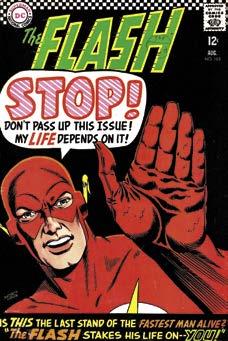
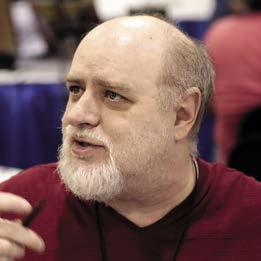
What did Templeton look to for the style of these adventures? “Silver Age DC books, mostly the stuff Schwartz and Wiesenger did with the Superman office in that period. Supermonkeys and werewolf reporters and space dogs populated that series, so I behaved like I was writing for Mort and Julie and proceeded from there. Assume there’s a ’60s Justice Leaguer named ‘Dog-Man,’ and you have the world I was playing in. And then there’s Murphy the Wonder Dog, who was modelled and named after a dog I owned as a child, except our dog didn’t have a cape. One of the stories in the series, a science fiction/ fantasy idea I’d had in my pocket for years—a parallel world to Earth where no one had ever conceived of lying and introducing dishonesty to that society.... was the premise of a fairly tepid Ricky Gervais movie years later, but I humbly submit I did the gag better. My heroes used lying only for good! After all, they made free ice cream the law! One of the covers, the one where you have to sign a release to be allowed to take the Mad-Dog comic home with you, is based on a Flash cover from the ’60s. Silver Age DC is where my brain starts eating comics, so it was easy to mine that stuff from my gray matter.”
IF YOU ENJOYED THIS PREVIEW, CLICK THE LINK TO ORDER THIS ISSUE IN PRINT OR DIGITAL FORMAT!
The story he’s referring to is in issue #3 where we learn that the robot monkeys were teleportation devices that took them to another world. Mad-Dog and Buddy meet their counterparts on that Earth. There is no Mad-Dog and everyone has huge heads and little bodies. There, they must defeat the dictator, El Toro Muerte, which Buddy does by lying to him. When they return to our world, they are shocked to find that Penny has left a letter saying she is leaving.
BACK ISSUE #162
As you’ve likely noticed, the villains up to this point have all been animal-based. There’s a reason for that. “Our main character is a dog. A dog’s an animal. It’s really no more complex than that,” Templeton explains. “Stan Lee and Steve Ditko did the same thing with Spider-Man, keeping his most popular villains animal based (except the Green Goblin!). Octopus, Lizard, Vulture, Rhino, Scorpion, even Kraven is covered in lion iconography. It occurred to me that Mort and Julie would have paired up a dog-based superhero with evil space cats. No brainer. The later villains were more ’90s style, with Femininja, Shiny Commandoes’ Altar Boy, Doctor Teeth, Bloodstream, and my favorite: Darkhawkwolfstrikeknight.”
BACK ISSUE GOES MAD! Things get crazy this issue as we cover Madman, Batman: Mad
the
Hatter,
MAD superhero movie
and more! Featuring the
(84-page FULL-COLOR magazine) $10.95 (Digital Edition) $4.99 https://twomorrows.com/index.php?main_page=product_info&cPath=98_54&products_id=1836
(left) Ty Templeton’s take on the cover of (inset) Flash #163. (right) Mad-Dog and Buddy battle the Savage Caribou in issue #2.
TM & © 2025 Paramount Pictures. Flash TM & © 2025 DC Comics.
ty templeton Gage Skidmore.
Love,
parodies,
Mad
Madballs,
work of MICHAEL ALLRED, BRUCE TIMM, PAUL DINI, GERRY CONWAY, DOUG MOENCH, MIKE W. BARR, JEPH LOEB, and others. Madman cover by MICHAEL ALLRED! Edited by ROGER ASH


